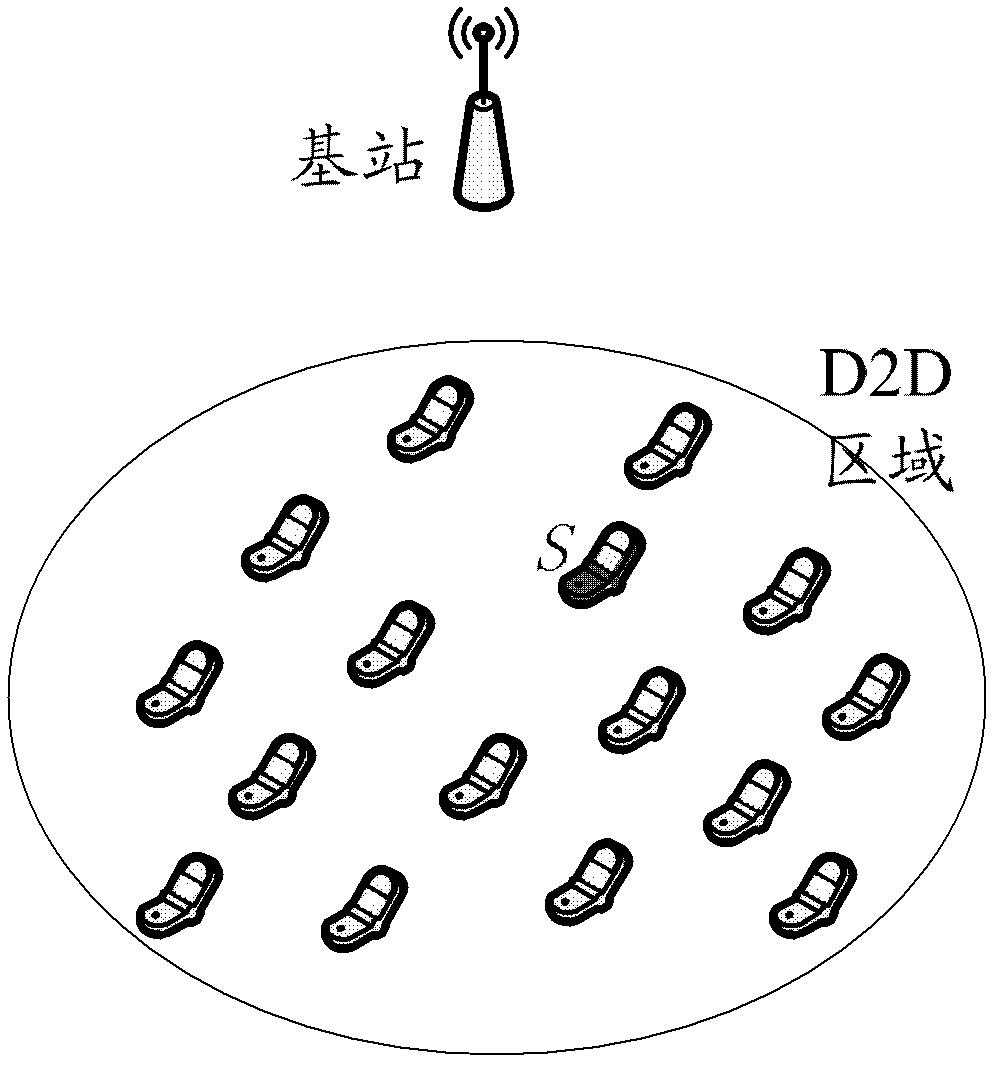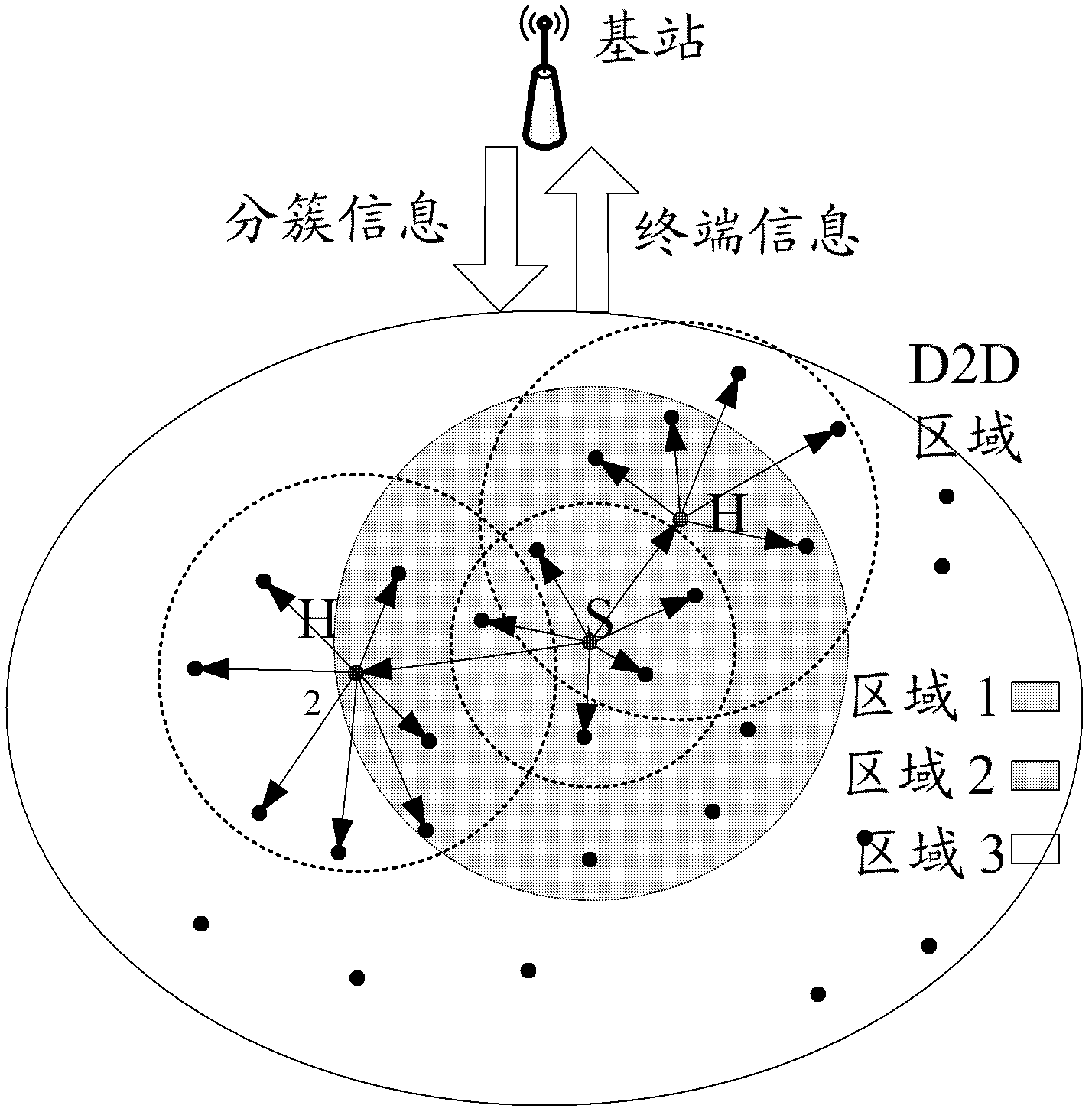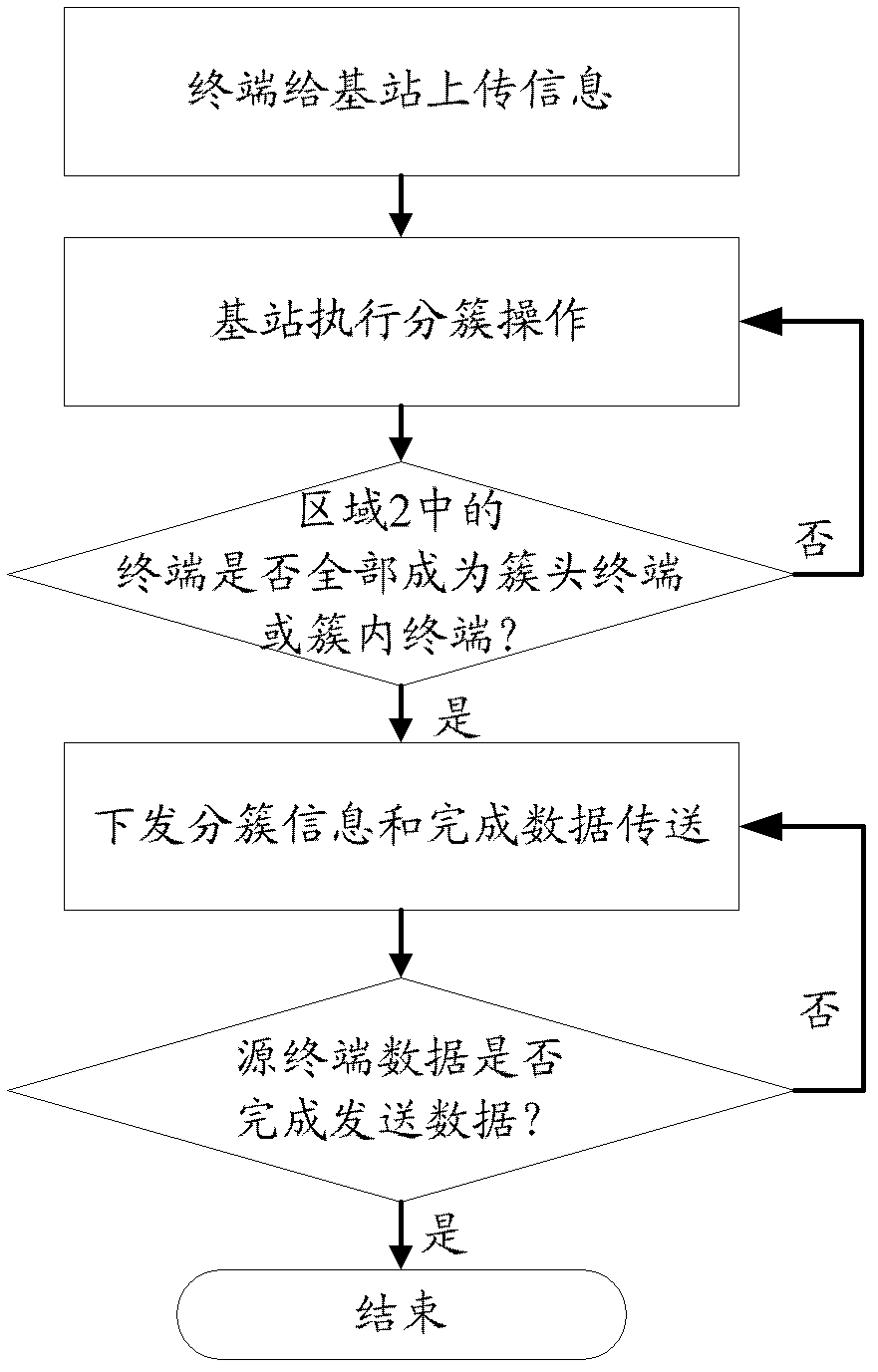Position-information-based device-to-device (D2D) clustering multicast method
A location information and clustering technology, applied in the field of mobile communication, can solve the problems of not considering the cluster head load, unfavorable D2D communication, occupying time-frequency resources, etc., and achieve the effect of improving D2D communication efficiency, broadening the application range, and extending the running time
- Summary
- Abstract
- Description
- Claims
- Application Information
AI Technical Summary
Problems solved by technology
Method used
Image
Examples
Embodiment Construction
[0026] In order to make the object, technical solution and advantages of the present invention clearer, the present invention will be further described in detail below in conjunction with the accompanying drawings and embodiments.
[0027] see figure 2 and image 3 , to introduce the specific operation steps of the clustering multicast method of the device-to-device D2D communication system based on location information in the cellular network of the present invention:
[0028] Step 1, the terminal uploads information to the base station: all terminals located in the D2D area exchange signaling with the base station, and each terminal including the source terminal uploads its geographic location, transmission distance and respective remaining energy information to the base station. The transmission distance includes the direct transmission distance of the source terminal (for dividing the area) and the broadcast transmission distance of each terminal (for clustering and clus...
PUM
 Login to View More
Login to View More Abstract
Description
Claims
Application Information
 Login to View More
Login to View More - R&D
- Intellectual Property
- Life Sciences
- Materials
- Tech Scout
- Unparalleled Data Quality
- Higher Quality Content
- 60% Fewer Hallucinations
Browse by: Latest US Patents, China's latest patents, Technical Efficacy Thesaurus, Application Domain, Technology Topic, Popular Technical Reports.
© 2025 PatSnap. All rights reserved.Legal|Privacy policy|Modern Slavery Act Transparency Statement|Sitemap|About US| Contact US: help@patsnap.com



